Successful and injury-free Marathon training without the long runs?
Performance coach, massage therapist and friend of Trigirl, Emily Chong, subjected herself to a nighttime off-road marathon to test out her own theory about interval training.
Emily adopted a “no long run” style of training for the marathon, using gym-based strength training and high-intensity intervals in the pool and on the bike to boost her fitness, to great success.
Read more about Emily’s marathon training and why it could help to keep you injury-free here:
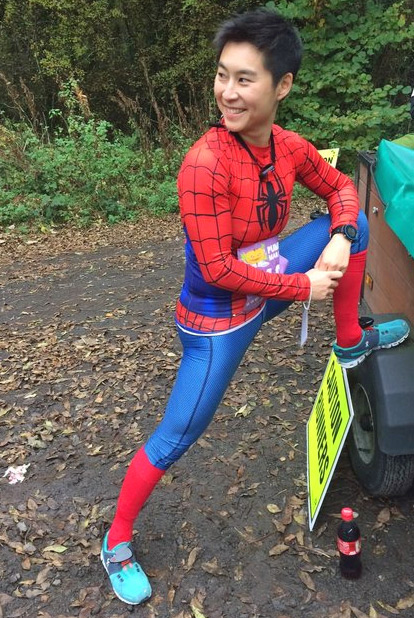
It’s cold, dark, wet and icy outside. You’re feeling tired or maybe you’re recovering from an injury. Perhaps you have a marathon booked in a few months. Should you grin and bear it and stick with the mileage written in the training plan? Should you listen to your body and rest?
Is Marathon training without long runs possible?
Your answer may be interval training, cross training and pushing weights in the warmth of a gym.
At the 1952 Olympics in Helsinki, Emil Zátopek became the first person to win the 5k, 10K and the marathon in the same Olympics. Before then he had never run a marathon, not in training, nor in a race. His secret? Interval training.
Combustion Triangle
The “combustion triangle” of sports training consists of:
- Cardiovascular fitness
- Strength & conditioning and
- Technique
Using just one activity to train for these components is not uncommon; many runners only run. However, this can be time consuming and risky considering the amount of impact and the time it takes to recover from running.
My Marathon Training Experiment
I wanted to experience how effective cross training and interval training could be for this blog post, so I signed up for a marathon as an experiment. Apart from a very slow Ironman in 2014 (with a 5hr run split), I had never run a marathon before. While I’m used to high volume swimming and cycling, I don’t run more than 10km at a time.
Oregon Circuits for Triathlon Training
We’re back to run training this week, but we’re mixing it up with a high-intensity session that works on overall body strength as well as run strength and speed. Once again, you’ll get extra benefits in less time!
Welcome, Trigirls, to Oregon Circuits for triathlon training, Trigirl HITT-style!!
Getting Started
If you’re new to Trigirl’s weekly HITT training, see week one for more information on HITT, how it works and how to approach the sessions. Though high-intensity training has been proven safe, if you are starting a new exercise plan (whether traditional triathlon training or HITT), it’s always a good idea to speak with your doctor.
This week we’ve got Oregon Circuits on the agenda. So what are they and how can you use Oregon Circuits for triathlon training?
Oregon Circuits were invented at the University of Oregon by coach Luiz de Oliveira. Combining run intervals with bodyweight strength exercises, they definitely suit our ‘more benefits, less time’ training approach.
Trigirl’s High-Intensity Triathlon Training – Tabata Bike Session
If you’re new to Trigirl’s weekly HITT training, see week one for more information on HITT, how it works and how to approach the sessions.
Though high-intensity training has been proven safe, if you are starting a new exercise plan (whether traditional triathlon training or HITT), it’s always a good idea to speak with your doctor.
Your HITT Session for the Week:
This week we’re getting on the bike for a super-fast, super-efficient leg burner!
You can perform this session indoors or out. However, if you are training indoors, it’s recommended that you ride on a turbo trainer, Wattbike or spin bike, with a typical gym bike being the least-recommended option. (The closer that you can train to your actual bike set-up, the better!)
We’re basing this session on Tabata, discovered by Japanese scientist Dr. Izumi Tabata.
Tabata and his team conducted research on two groups of athletes. The first group trained at a moderate intensity level while the second group trained at a high-intensity level.
The moderate intensity group worked out five days a week for a total of six weeks; each workout lasted one hour. The high-intensity group worked out four days a week for six weeks; each workout lasted just four minutes (20 seconds of hard training followed by 10 seconds of rest repeated 8 times).
The results; Group 1 had increased their aerobic system (cardiovascular), but showed little or no results for their anaerobic system (muscle).
Group 2 showed much more increase in their aerobic system than Group 1, and increased their anaerobic system by 28 percent!
In conclusion, high-intensity interval training has more impact on both the aerobic and anaerobic systems.
Welcome to week two of HITT, Trigirl’s High-Intensity Triathlon Training!
Getting Started
If you’re new to Trigirl’s weekly HITT training, see last week’s post for more information on HITT, how it works and how to approach the sessions.
Though high-intensity training has been proven safe, if you are starting a new exercise plan (whether traditional triathlon training or HITT), it’s always a good idea to speak with your doctor.
Your HITT Session for the Week:
This HITT swim session can be performed in very little time, but a decent warm-up and some drills are included to get you and your swim form prepped and ready for the hard work HITT intervals. There is also a recommended cool down at the end, but all-in the session still clocks in at under 30 minutes!
Warm-up for 10 minutes:
– 5 minutes front crawl easy
– 3 minutes light kick (keep it fairly easy!)
– 2 minutes pull (front crawl using a pool buoy)
Drill set:
4-6 x 50 metres (as 25 m 6-3-6 drill, 25 m front crawl)
British triathlete, Leanda Cave, is expanding her female Team LC ambassador group in the US. Though the programme is currently in the US only (Cave lives and trains in the States), we’re excited to see that they are hoping to take it worldwide in the future. (And we’re hoping that since Leanda is British, that we’ll be next!)
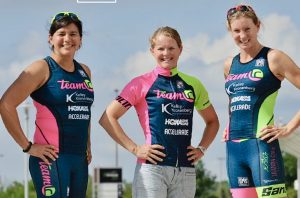 Team LC is a women’s ambassadorship program for both elite as well as amateur age groupers from across the US. They are expanding from 18 ambassadors in 2017 to 30 this year.
Team LC is a women’s ambassadorship program for both elite as well as amateur age groupers from across the US. They are expanding from 18 ambassadors in 2017 to 30 this year.
Even though we can’t apply (yet!) we’re thrilled to see the increase in an organisation that is so in line with Trigirl’s core values.
On their website, Team LC lists their beliefs as:
- Creating opportunities for achievement
- Creating a supportive environment to help realize personal and professional goals
- Increasing women participation in sport and female leadership in the business world
- Recruiting women athletes from all over the US and eventually worldwide
- Building and growing a strong community of women to be physically active
- Encouraging other women to participate in triathlons
- Looking for women role models who are full of energy and motivation
- Recruiting women who will have a positive influence on others to live a healthy lifestyle
Welcome to week one of HITT, Trigirl’s High-Intensity Triathlon Training!
Getting Started
If you’re just starting out, there’s nothing wrong with incorporating high-intensity. However, since running involves impact, it’s suggested that you build up to the sessions to get your body prepared.
Spend a few weeks getting your body used to running (and swimming and cycling) with some easier efforts. Then, progress by adding minimal intervals, building up the number of intervals each week.
Start with one high-intensity session weekly, with the aim of ultimately doing at least one per week per discipline.
Though high-intensity training has been proven safe, if you are starting a new exercise plan (whether traditional triathlon training or HITT), it’s always a good idea to speak with your doctor.
How does HITT differ from other triathlon training plans?
Traditionally, triathlon training plans are written based on the concept of periodisation. This breaks a season into base, build, peak and race phases.
HITT – try time saving High Intensity Triathlon Training sessions this season
If you take classes at the gym or have paid attention to the fitness world over the past several years, you’ve probably heard of HIIT. But what is HIIT and how does it apply to you as a triathlete-in-training?
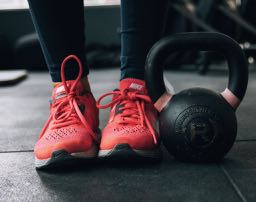
HIIT, short for high-intensity interval (or intermittent) training, is a training programme that incorporates high to very high levels of effort, mixed with short rest or easy recovery intervals. Though it’s been around since the 1970s, HIIT has recently gained greater popularity in the fitness community because it equates to better fitness and higher levels of weight loss in less time.
As written in an article in Shape magazine, ‘When it comes to HIIT, less might actually be more. Squat jumps for joy.’
So, is high-intensity training right for triathlon? (Yes.) Is it right for you? (Probably.) And how do you incorporate high-intensity triathlon training into your training regime? (We’re here to help.)
Stay tuned for our new weekly training session offering HITT tips and a suggested workout that you can incorporate into your overall training plan.
It will help you get to the finish line in less time – both in training, and on the race course.
Save time and achieve your goals with HITT!
Happy Training!
Click here to read more on HIIT and high-intensity training for triathlon.
Triathlon Training Log – helping you to achieve your goals
It’s that time of year when everyone is talking New Year, New You. You’re hearing about dry January, Run Every Day January (for a great cause), New Year’s resolutions, detoxes, and unending ideas on how to make a fresh start. Sticking to your goals can be difficult, but there are ways to ensure that they don’t go by the wayside by the first of February.
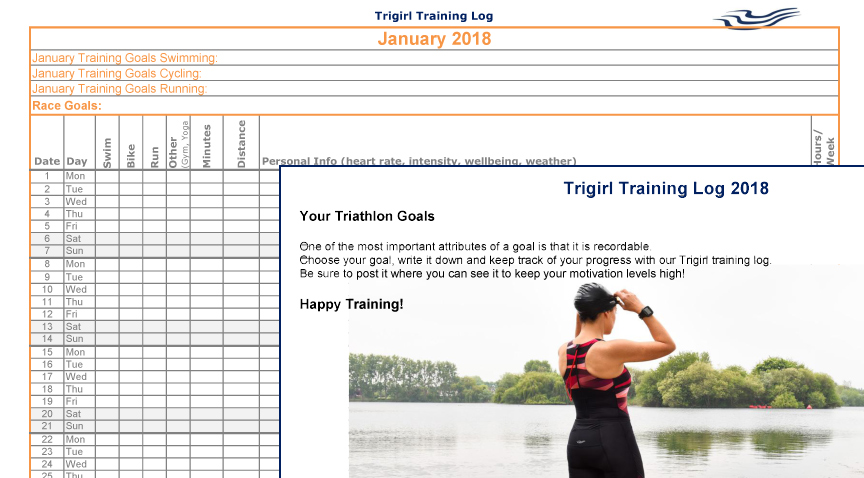 The best way is to create goals that are SMART (Specific, Measurable, Achievable, Realistic, Time sensitive).
The best way is to create goals that are SMART (Specific, Measurable, Achievable, Realistic, Time sensitive).
For more on what a SMART goal is and how to set them, click here.
One of the best ways to make your SMART goals stick is by writing them down. We can help! Try our FREE 2018 Triathlon Training Log. With a one month per page format, you can see what you’re working towards and how you’re getting there.
Want to access our Triathlon Training Log? It’s available FREE to our newsletter subscribers! Not a subscriber? Click here.
New Trigirl Spring 2018 Collection Coming Soon
We’re very excited to announce the new collection, available for Spring 2018.
We’ve already had some inquiries asking what’s coming for Spring 2018 (hopefully because you’re already getting excited about the upcoming race season!).
We can’t show you yet, but here’s a few hints about what to expect in our new season collection.
Coming up for spring…
A first for the Trigirl collection, we have fabulous new running tops, designed in two beautiful prints made with the quality fabric and detail that you expect from Trigirl.
We’re continuing our partnership with ECONYL® to bring you gorgeous tri kit that’s also environmentally sustainable.
In addition to our high-performance fabrics, functional details, and flattering women’s-specific fits, here are some highlights that you’re sure to love:
Help us in helping others by running the Women’s Aid 10k race.
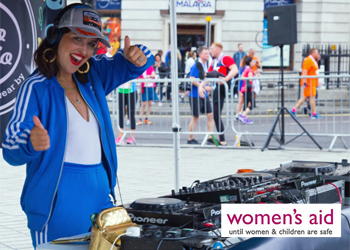 Want a fun challenge? Want to raise money for Women’s Aid? Join team Trigirl UK and run the British 10k in support of #TeamWomensAid!
Want a fun challenge? Want to raise money for Women’s Aid? Join team Trigirl UK and run the British 10k in support of #TeamWomensAid!
The iconic British 10K is the fastest way to tour central London’s famous landmarks from Piccadilly to Whitehall with a route that races past Regent Street, Trafalgar Square, the Embankment, and Westminster Bridge.
More importantly, by running for Women’s Aid, you’re helping to provide life-saving services and build a future where domestic violence is not tolerated.
If you’re interested in running with us, sign up here. You’ll receive a ticket to sign up at British 10k’s website. When asked if you’d like to join a team, type in Trigirl UK.
Whoopee I did it! I’m delighted to report that last week I finally crossed the line of the Pendle Sprint Triathlon.
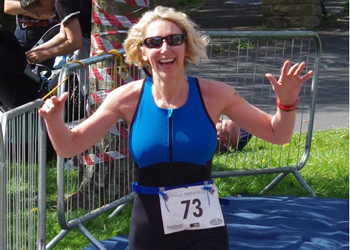 I’d been pretty chilled as I counted down to the big day. I was enjoying the training for the most part and loving being bigged-up by friends and family who were really proud of what I was hoping to do.
I’d been pretty chilled as I counted down to the big day. I was enjoying the training for the most part and loving being bigged-up by friends and family who were really proud of what I was hoping to do.
It was only the arrival in my inbox of the arrangements for the event itself, that made my stomach churn and gave me a bit of a wobble. The info I received was long and thorough with detailed instructions and timings of what I needed to do once things got under way.
Race day dawned beautifully and my husband, Dean, and I set off early for Barnoldswick – a very pretty village in the Pennine hills. Dean, who has been a star throughout the process, was there armed with his camera and best cheering voice. I was so glad to have his company and moral support.
Breeze Group Rides – A night out with the girls, with a difference
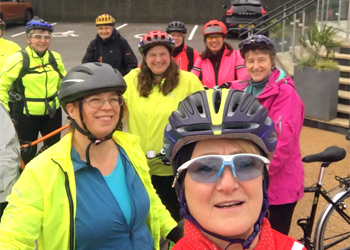 Learning how to fix a puncture and give my chain a bath weren’t the only useful things I learned on my bike maintenance course. Chatting to one of the other ladies there, she told me she was about to become a Breeze Champion.
Learning how to fix a puncture and give my chain a bath weren’t the only useful things I learned on my bike maintenance course. Chatting to one of the other ladies there, she told me she was about to become a Breeze Champion.
I’d not come across Breeze before but she gave me the low down and it sounded great. As soon as I was out of my overalls and back in the comfort of my own home, I checked it out.
The Breeze initiative was set up in 2011 by British Cycling.
 Kay reviews Trigirl’s latest one-piece trisuit
Kay reviews Trigirl’s latest one-piece trisuit
With my race only a few weeks away, I was really looking forward to getting my hands on my new Trigirl trisuit. I wanted to start to put the individual events together and understand what it feels like to do the cycle leg straight from the water.
So, I opted for the Spice trisuit in Paradise Bay. It’s a lovely electric blue with a contrasting turquoise on the front zip and back neckline. It’s lightweight and breathable, with mesh panels on the back and lower legs to keep you cool and speed up drying.
I was itching to test it out and wasn’t disappointed. The chamois was comfortable, low profile and super quick to dry. The legs didn’t ride up, and I have had no chafing. The rear pockets held gels safely in place.
It’s a flattering fit – you can tell these girls know what they’re doing! The legs are a good length and I was relieved to see it wasn’t see-through when wet. It’s very comfy, too, with no digging in around the armholes or straps and the whole thing dried very quickly.
In conclusion, this is a lovely piece of kit. I’m confident it will perform technically and comfort is one less thing I’ll have to worry about on race day. I think I feel the part now too. I’m less like the novice and more like a woman who means business – bring it on!
Clipping in to clipless pedals – what’s that all about?
In for a penny, in for a pound. As the proud owner of a fancy new road bike there was now no avoiding the mysterious world of cleats and clipping in.
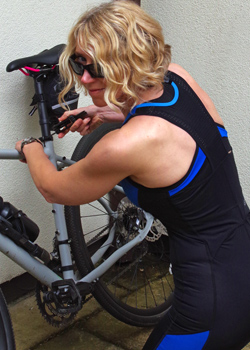 Some useful basics for the novice
Some useful basics for the novice
• Clipless pedals are a two-part system. The pedal has a metal locking mechanism on it and there is also a metal or plastic cleat that attaches to the bottom of your shoe. This means that with a little practice you can connect rider and bike via the pedal which increases efficiency.
• The “clipless” term is potentially misleading. Though they don’t have “toe clips” as such, the action by which you connect shoe to pedal is still called “clipping in and out”.
• There are essentially 2 types of system – road or 3-hole (SPD-SL, sometimes called Look-style) and SPD or 2-hole (also called MTB, as they are typically used for mountain biking). The road shoes are
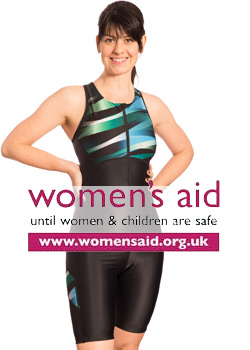 Since our launch in 2007, Trigirl’s goal has been to empower women in the triathlon community, starting with triathlon kit that works for women. But we feel that supporting women in the triathlon community isn’t enough.
Since our launch in 2007, Trigirl’s goal has been to empower women in the triathlon community, starting with triathlon kit that works for women. But we feel that supporting women in the triathlon community isn’t enough.
In keeping with our mission to empower women, Trigirl is proudly supporting Women’s Aid, a grass-roots federation working to provide life-saving services and build a future where domestic violence is not tolerated.
Two of our exciting new initiatives to raise funds for Women’s Aid include: running the British 10K in support of Women’s Aid (more details of how you can get involved soon!) and for every Spice trisuit we sell, Trigirl will donate £3 to Women’s Aid.
We are proud to be supporting women, both in triathlon and in the community!
To see more about Women’s Aid’s valuable work, click here.
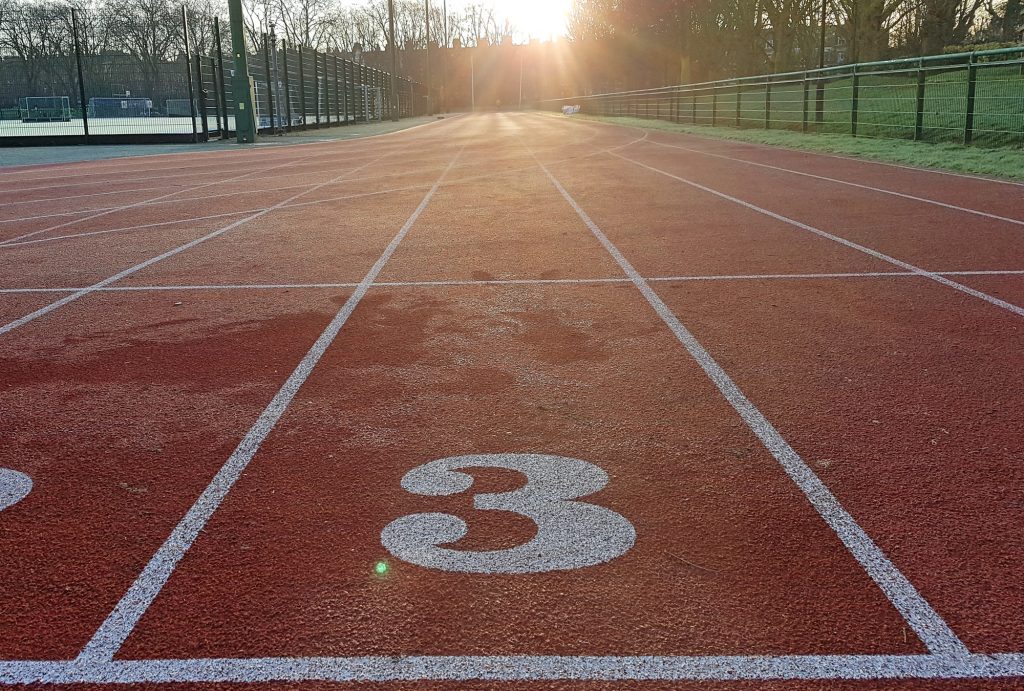
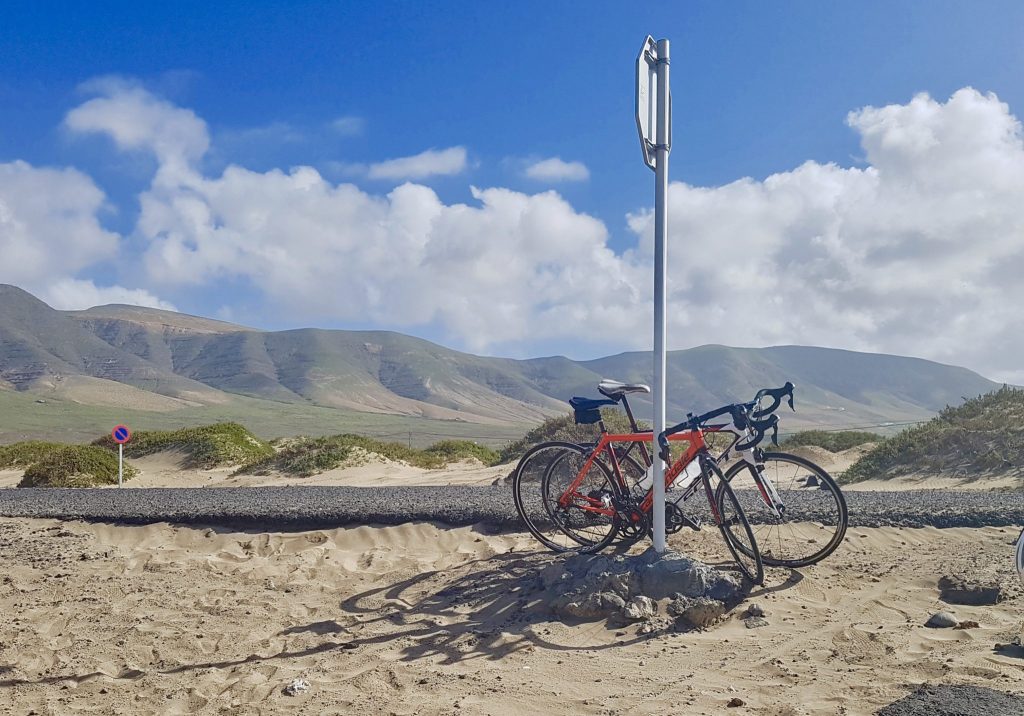
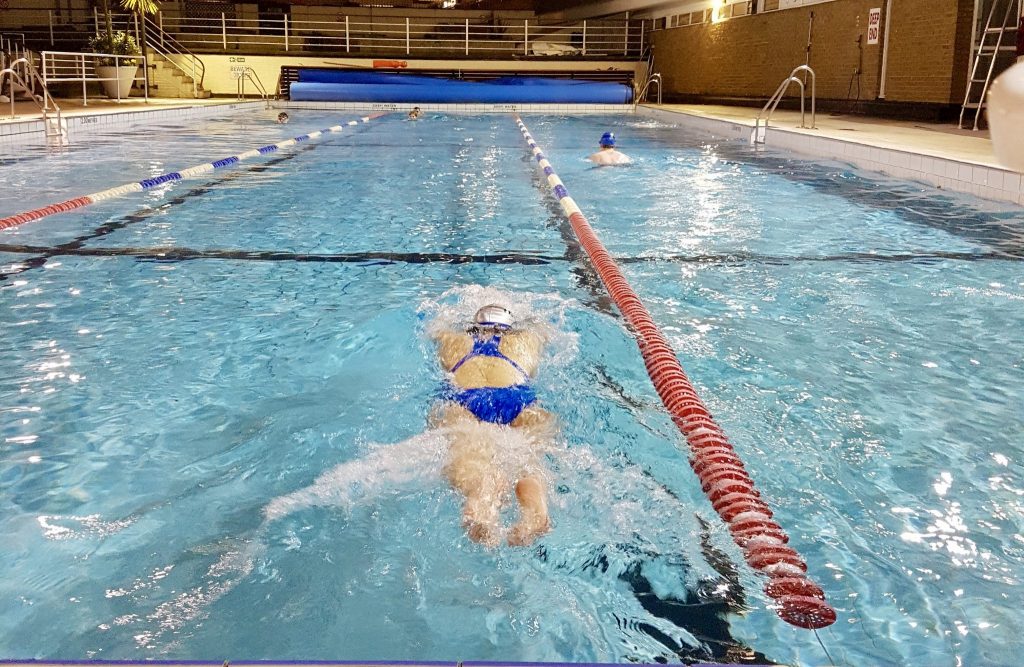
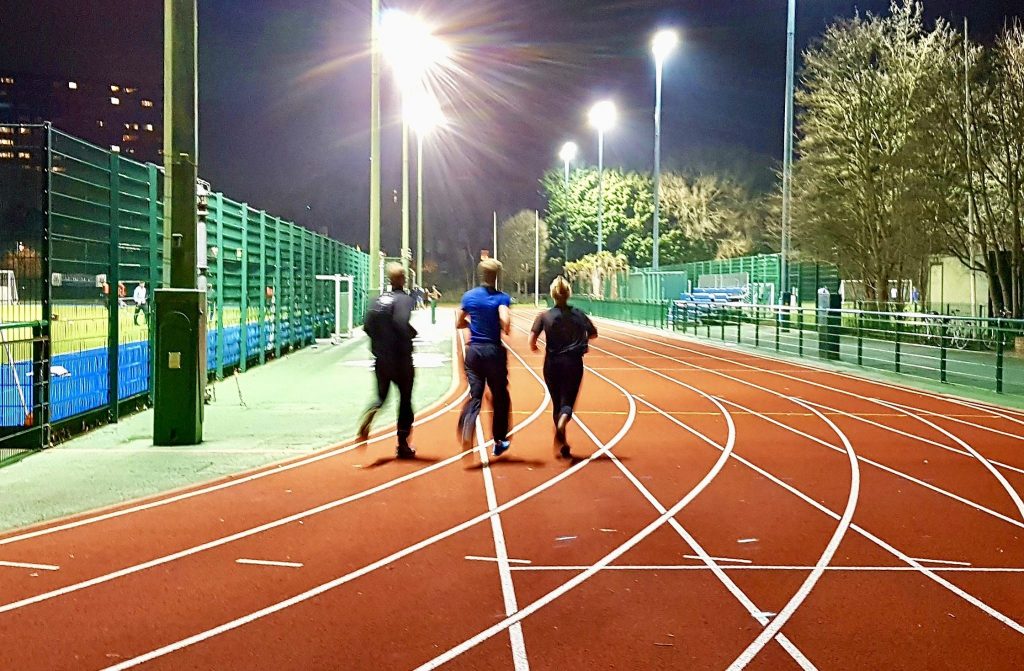

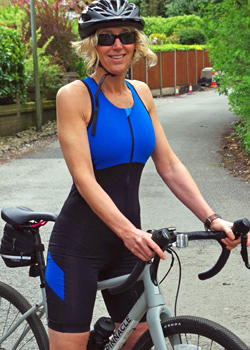 Kay reviews Trigirl’s latest one-piece trisuit
Kay reviews Trigirl’s latest one-piece trisuit